At the core of [Dave Wilson’s] search for musical wisdom is Vienna’s Musikverein, the greatest concert hall in the world. Wilson travels to it each year, soaking up the ambiance, the music, retuning his ears, so to speak. With the XLF, his efforts have paid off. Wilson has not produced a good loudspeaker. He has created a great one.
———— Jacob Heilbrunn, The Absolute Sound
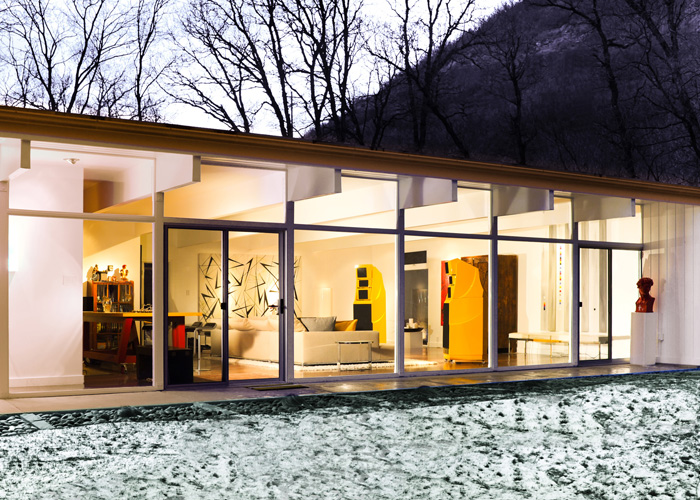
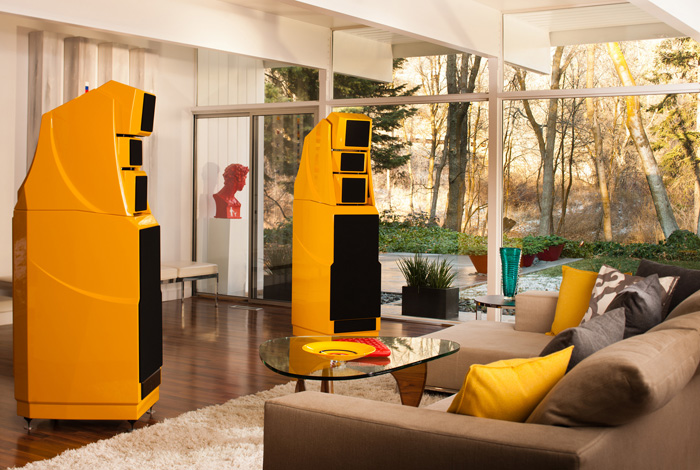
Alexandria XLF: Idealism and Technology
Dave is an idealist, but he is also a disciplined empiricist. Dave the idealist insists that no detail is too small to be scrutinized. Dave the empiricist knows that it's all too easy to be seduced by the technological promise of a given part. See how these two defining characteristics played out in Wilson's new flagship loudspeaker.?
Going lower or playing louder say a great deal about the sound but nothing about the music, and the XLFs are all about the music. And this brings me back to the question with which the review began. Sound or music: which is it for you? If it’s the latter (and I suspect for most audiophiles it is), then the Alexandria XLFs are the deepest, most complete expression of it.
?————Marc Mickelson, The Audio Beat
XLF Port Technology
It’s relatively easy to achieve flat frequency response in an anechoic chamber. But, in the real world, the sound of loudspeakers is highly dependent on the room they’re in. Room-induced bass non-linearities are problems that have generated lots of solutions. One of the most common is active equalization, often processed in the digital domain. The downside is that insertion of an electronic equalizer into the audio signal produces deleterious audible effects in the rest of the frequency spectrum.
Developing the Convergent Synergy Tweeter
Tweeter technology evolved in the first decade of the new century, with new designs using exotic materials such as diamond and beryllium. Proponents of these designs extolled their ultra-wide bandwidth, in some cases extending to beyond 50 kHz. The engineering rationale was that pushing the tweeter’s resonant frequency (or break-up mode) well above the audible spectrum would produce greater linearity within the audible range.
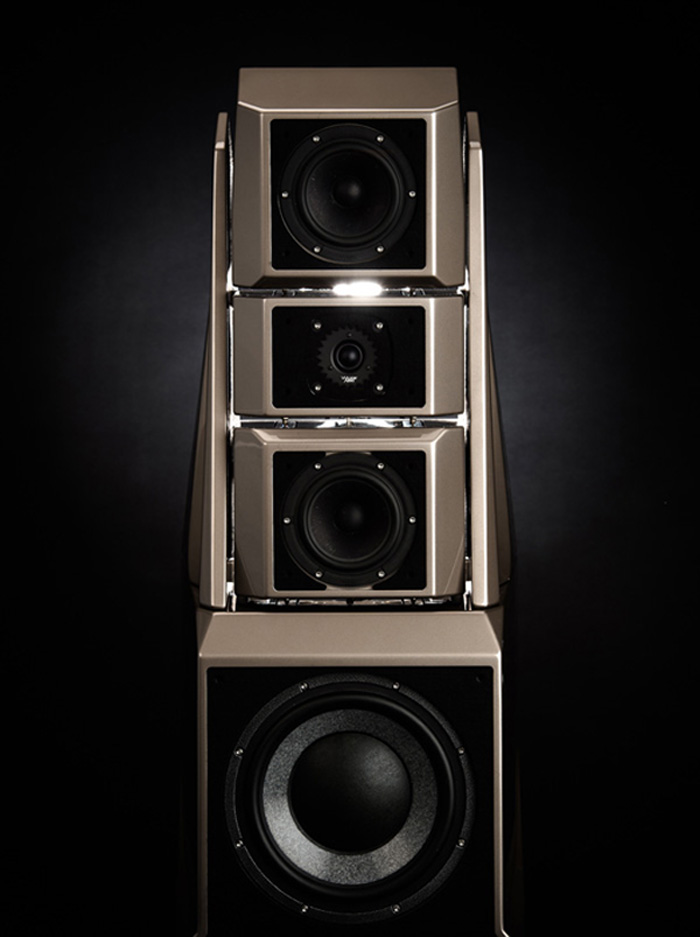
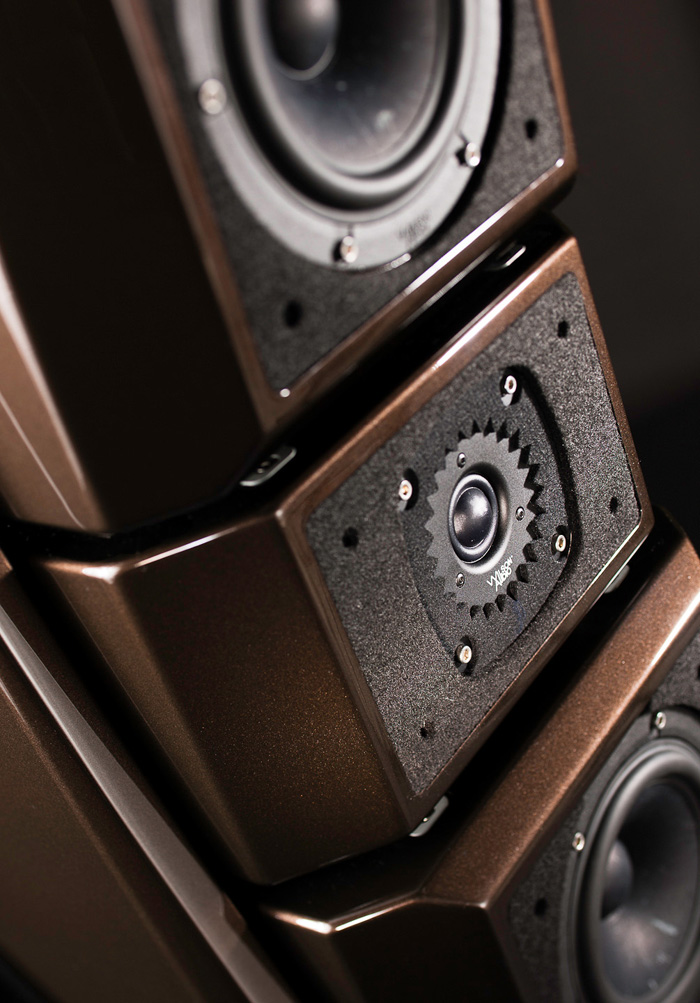
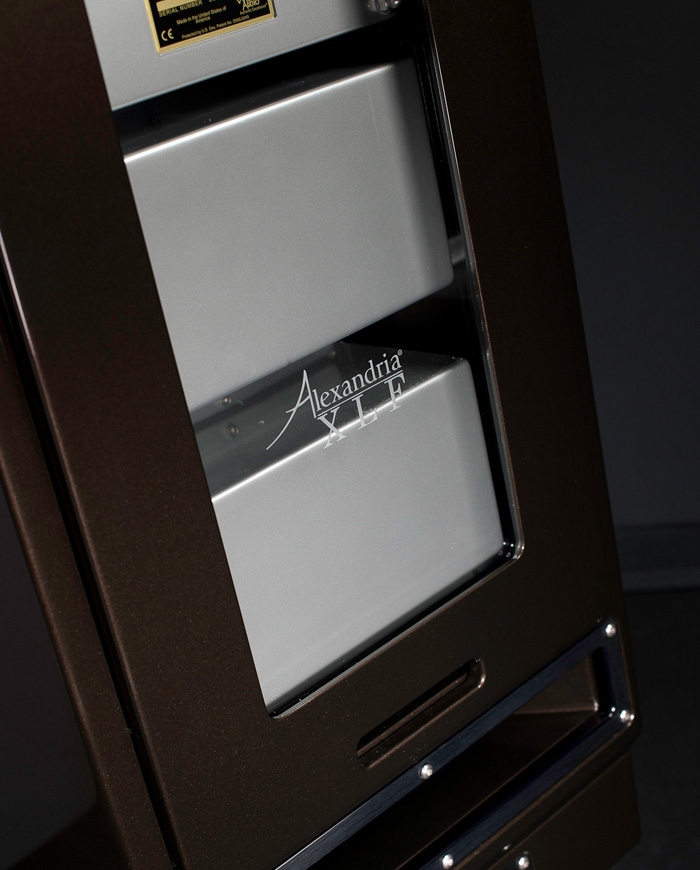
Alexandria XLF Technical Specifications
Drivers
Woofer
One 13 inch, (33.0 cm)
Woofer
One 15 inch, (38.2 cm)
Midrange
Two 7 inch (17.78 cm)
Tweeter
One 1 inch silk dome (2.54 cm)
Rear Firing Tweeter
One 1 inch silk dome (2.54 cm)
Enclosures & Materials
Woofer Enclosure
XLF port, adjustable rear or front firing
Midrange Enclosure
Rear Ported
Tweeter Enclosure
Sealed
Measurements
Sensitivity
93.5 dB @ 1W @ 1 meter @1 kHz
Nominal Impedance
4 ohms, 3 ohms minimal
Minimum Amplifier Power
7 watts per channel
Frequency Response
19.5 Hz – 33 kHz +/- 3 dB Room Average Response [RAR]
Overall Dimensions
Height
70 1/4 inches, (178.44 cm)
Width
19 13/16 inches, (50.38 cm)
Depth
27 7/8 inches, (70.80 cm)
System Weight Per Channel
655 lbs each (297 kg)
Total System Shipping Weight (approx.)
1910 lbs pair (866 kg)